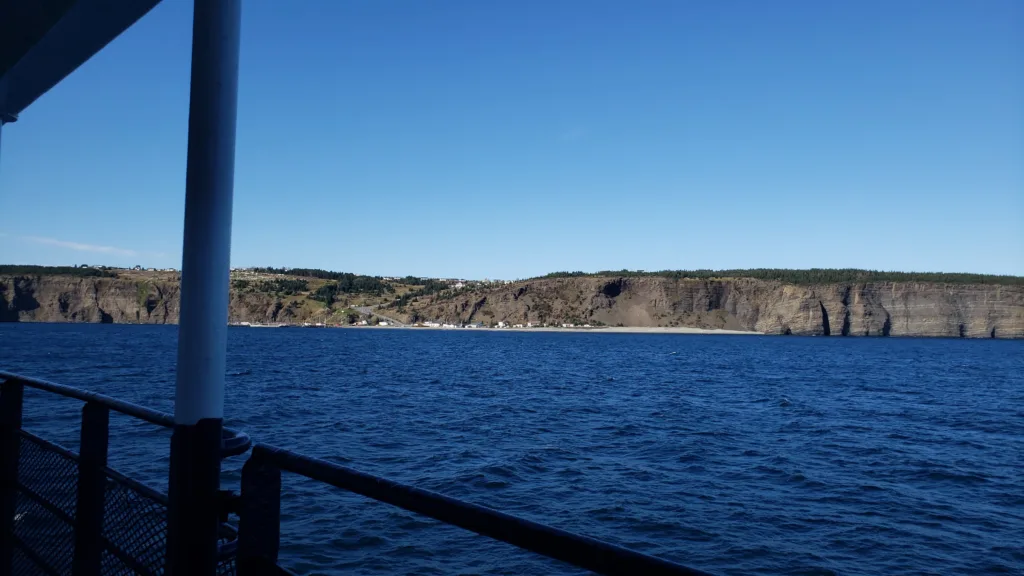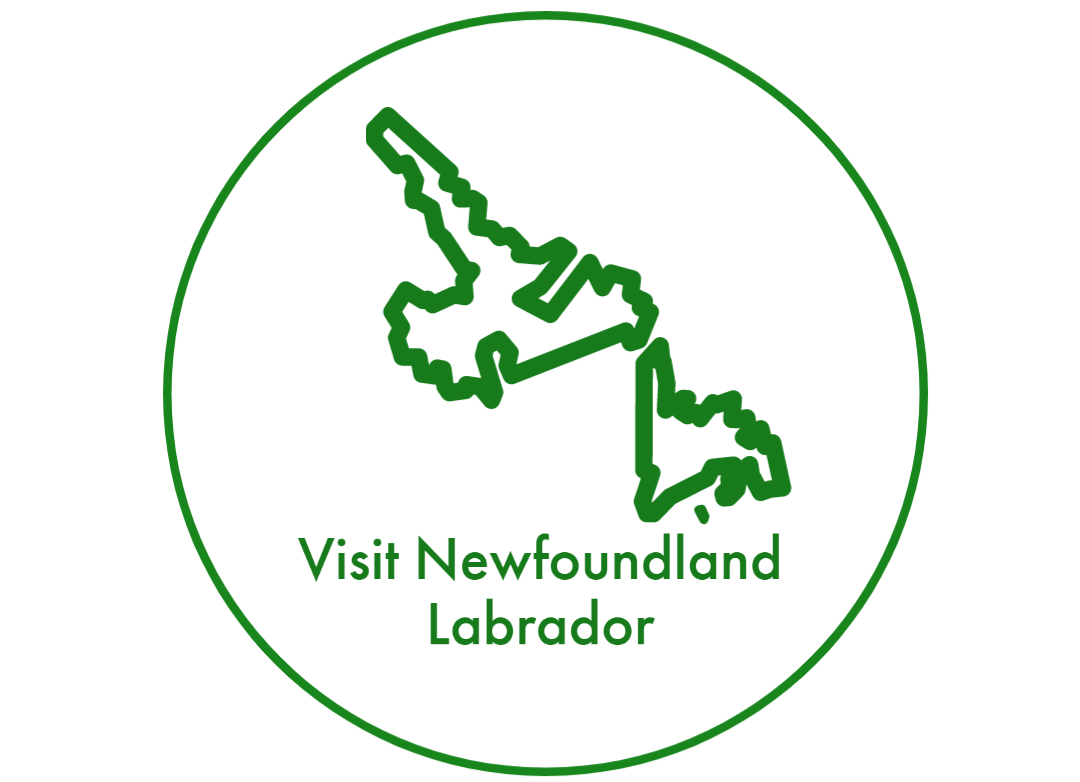Beautiful Islands Around Newfoundland and Labrador to Visit
Beautiful Islands Around Newfoundland and Labrador to Visit for your next adventure. Newfoundland and Labrador, the easternmost province in Canada, is a treasure trove of natural beauty and scenic wonders. With its rugged coastline, pristine waters, and many islands, this region offers an unparalleled opportunity for travellers seeking an escape into the lap of nature. We will take you through the beautiful islands around Newfoundland and Labrador, highlighting the must-visit spots, hidden gems, and everything in between. This comprehensive guide will not only be your source of inspiration but also serve as a practical reference for planning your trip.
Before we embark on island hopping, let’s get some insight into the Island of Newfoundland. Newfoundland and Labrador is a vast province, covering over 405,000 square kilometres, making it the perfect canvas for Mother Nature to paint her masterpieces. The province is divided into two parts: The Island of Newfoundland and mainland Labrador. Together, they offer a diverse range of islands, each with a unique charm.
Fogo Island: A Gem in the Atlantic

Fogo Island is known for its rugged, untouched beauty. Located off the coast of Newfoundland, it’s a haven for hikers and nature enthusiasts. The Island is an ideal spot for watching icebergs and puffins during the spring and summer months. Fogo Island is one of the largest islands off the coast of Newfoundland. One of the best times to visit Fogo is when the summer weather is pleasant but not too hot. That said, if you’re looking for a more adventurous time of year, you can still have a fantastic time on the Island, even during the winter months (December through February); you’ll find that Fogo Island offers plenty of activities to keep you busy and entertained. Fogo Island is a short Ferry ride from Farewell, a small community in central Newfoundland and Labrador. Fogo island’s population is about 2000 people, about a fifty-minute ferry ride from Farewell. The Atlantic Ocean surrounds the Island, so you expect changes in temperature and weather around the Island rapidly.
Bell Island: A Historical and Natural Wonder

Bell Island, situated in Conception Bay, is known for its rich mining history and breathtaking sea caves. Explore the underground iron ore mines, now open to the public, and then take in the Island’s natural beauty, including its scenic walking trails. Bell Island Travel Guide › Bell Island is approximately 34 square kilometres, with something to see on every corner. The only way accessible to Bell Island is by a ferry that runs from Portugal Cove to Bell Island. Bell Island is renowned for its dramatic sea cliffs, offering breathtaking views of the vast Atlantic Ocean. So stroll along the rugged coastline, breathe in the salty air, and let the sheer beauty of the cliffs fill you with joy. The towering sea cliffs that frame the island coastline provide a stunning backdrop for exhilarating hikes and panoramic views. These are some of the Best Things To Do On Bell Island. Download your Bell Island Ferry Schedule here. ferryservices-schedules-pdf-old-bell-island-rates.
Change Islands: A Step Back in Time
Change Islands is a step back in time with its preserved heritage homes and unique way of life. The Island is a serene escape from the hustle and bustle of modern life, offering a glimpse into Newfoundland’s rich history.
Like so many small towns in Newfoundland, there’s a particular charm to this place. Life moves at a slower pace on the island. With only 300 inhabitants, it’s a preserved historic location where walking among original homes is like a journey back in time. The silence of the surroundings is captivating, and there are breathtaking coastal trails and interesting local personalities to uncover. Get your Ferry schedule here: Fogo Island – Change Islands – Farewell.
St. Pierre and Miquelon: A Touch of France in North America
Located just off the coast of Newfoundland, St. Pierre and Miquelon is a piece of France in North America. St. Pierre and Miquelon islands offer a unique blend of French culture, cuisine, and history, providing a distinct contrast to the surrounding Canadian landscape. If you are visiting from Newfoundland, you can take a ferry from the town of Fortune on Burin Peninsula, in Eastern Newfoundland. Euro is the official currency in Saint Pierre and Miquelon. Schedule and Update: It would be best to have a passport or an official valid government photo ID to go to St Pierre from Newfoundland and Labrador. You will need an official valid government photo ID if you are a Canadian citizen. The ferry tickets to St Pierre from Fortune Newfoundland and Labrador can cost $49 or more.
Newfoundland: The Paradise
Newfoundland is a vast island which has many places that are on many travellers’ bucket lists, including the Gros Morne National Park, which provides opportunities for rugged outdoor adventures and wildlife encounters. You will take the ferry from Blanc Sablon to St. Barbe or North Sydney, Nova Scotia, to Port aux Basques or Argentia.
You will cross the Strait of Belle Isle Area to St. Barbe and then drive to explore the island of Newfoundland. Newfoundland coast stretches for miles and offers a coastal adventure. Explore the remote beauty of the island, with its towering cliffs, pristine fjords, and unique geological formations. The ferry ride to Newfoundland is an experience.
Long Island: A Tranquil Escape
Long Island is nestled along the icebergs alley routh and offers a serene escape from the daily grind. This Island is a paradise for birdwatchers and hikers, with its lush forests and picturesque coastline. You can also explore the Island’s history through its preserved fishing stages and root cellars. Get your Ferry schedule here: Long Island – Pilley’s Island
Pilley’s Island: A Historical Gem
Pilley’s Island is a testament to the province’s rich mining history. It was once a thriving mining town, and today, you can explore the remnants of the mining era. The Island’s peaceful atmosphere and unique historical sites make it an intriguing destination for history enthusiasts.
Get your Ferry schedule here: Long Island – Pilley’s Island
St. Brendan’s: A Remote Island Exploration
St. Brendan’s is a remote and tranquil island. This island is perfect for those seeking solitude and natural beauty. With its rocky shores and picturesque fishing villages, it offers a glimpse into traditional Newfoundland life. The Island is also home to various wildlife, making it an excellent spot for birdwatching and photography. Get your Ferry schedule here: St. Brendan’s – Burnside. To get to the island, you need to take a ferry ride from Burnside that takes an hour. The island is quite large. Most of the island is wilderness, along with all the surrounding islands. Services available on St. Brendan’s Island include a church, community centre, convenience stores, post office, power plant, and a school.
Ramea: An Island with a Rich Fishing History
Ramea is a charming island with a rich fishing history. Explore the picturesque harbour and discover the Island’s unique way of life. There are opportunities to enjoy outdoor activities like hiking, kayaking, and wildlife watching. Get your Ferry schedule here: Ramea – Grey River – Burgeo.
Rencontre East: A Hidden Gem on the South Coast
Rencontre East, situated on the south coast of Newfoundland, is a hidden gem waiting to be explored. This quiet community offers beautiful coastal views and opportunities for hiking and camping. It’s a place to unwind and connect with nature away from the crowds. Get your Ferry schedule here: Rencontre East – Bay L’Argent – Pool’s Cove.
South East Bight: A Secluded Paradise
South East Bight is a secluded paradise on the Burin Peninsula. This Island offers untouched natural beauty, with sandy beaches, rocky cliffs, and pristine waters. It’s an excellent place for camping, hiking, and simply immersing yourself in the tranquillity of the surroundings. Get your Ferry schedule here: South East Bight – Petite Forte.
More Newfoundland and Labrador Travel Guides
- Enjoy The Beautiful Hidden Gems In Newfoundland Avalon Region
- The 3 Most Beautiful Places In Bonavista Peninsula We Visited
- Exploring These 8 Beautiful Unseen Places In Newfoundland
- 6 bucket list trips things everyone should do in their lifetime
- Gatherall’s Puffin and Whale Watch
- Rafting Newfoundland
Newfoundland is a paradise for those seeking diverse island experiences. From the cultural richness of Saint-Pierre and Miquelon to the historic charm of Bell Island, the remote tranquillity of St. Brendan’s, and the rugged beauty of Ramea, these destinations offer a myriad of experiences for travellers. Whether you’re looking for a historical journey, a wilderness adventure, or a peaceful retreat, these islands have something unique to offer. Start planning your trip and let the islands of Newfoundland captivate your heart and soul.
What is so special about Fogo Island?
Fogo Island is a park off the coast of Newfoundland. The island is renowned for its stunning coastal natural beauty, rich cultural heritage, and unique community spirit. One of the island’s most notable features is the Fogo Island Inn, a luxury hotel that offers guests an immersive experience in contemporary architecture, local cuisine, and traditional Newfoundland hospitality. The island also boasts a rugged landscape with dramatic coastlines, colourful houses, and various hiking trails that showcase its diverse flora and fauna. Fogo Island is also known for its strong artistic community, hosting numerous art studios and residencies that attract artists worldwide.
This is How long is the ferry ride to Fogo Island?
The ferry ride to Fogo Island from Farewell, Newfoundland, typically takes 45 minutes to a 1-hour, depending on weather conditions.
How many people live on Fogo Island, Newfoundland?
As of recent estimates, Fogo Island has a population of approximately 2,200 residents. The population fluctuates slightly due to seasonal changes and tourism.
What is the best time of year to go to Fogo Island?
The best time to visit Fogo Island is late spring to early fall, particularly from June to September. This period offers milder weather, longer daylight hours, and a greater chance to experience outdoor activities such as hiking, whale watching, and iceberg viewing.
How much is the ferry to Fogo Island?
The ferry cost to Fogo Island can vary, but as of the latest information, the fare is approximately CAD 7 for adults, $ CAD 6 for seniors, and $ CAD 3 for children. Vehicles are charged around CAD 20 each. It’s advisable to check current rates before travelling as prices may change.
Is Fogo Island worth visiting?
Yes, Fogo Island is worth visiting. It uniquely blends natural beauty, cultural richness, and luxury accommodations. The island’s breathtaking landscapes, traditional Newfoundland culture, and the world-famous Fogo Island Inn make it a distinctive destination for travellers seeking an off-the-beaten-path experience.
Can you swim on Fogo Island?
While you can swim on Fogo Island, the waters are typically quite cold, even during summer. There are no lifeguarded beaches, so swimming is at your own risk. However, the island does have several scenic spots where visitors can enjoy a dip, particularly in sheltered coves.
Can I rent a car and drive to Fogo Island?
You can rent a car in Newfoundland and drive to the ferry terminal at Farewell. Once on Fogo Island, having a car is beneficial for exploring the island. However, Fogo Island has no car rental services, so arranging your rental before boarding the ferry is essential.
What animals live on Fogo Island?
Fogo Island is home to seabirds like puffins and gannets and land animals like foxes and hares. The surrounding waters are rich with whales, seals, and fish.
Does Fogo Island have moose?
While moose are common in other parts of Newfoundland, they are not typically found on Fogo Island. The island’s isolation and lack of suitable habitat have prevented a moose population from establishing itself there.
Does Fogo Island have Internet?
Yes, Fogo Island has Internet access. The Fogo Island Inn, in particular, offers high-speed Internet to its guests. Most public facilities and accommodations on the island also provide Internet connectivity.
Can you see icebergs from Fogo Island?
Fogo Island is an excellent location for iceberg viewing, particularly from late spring to early summer. The island’s position along Iceberg Alley means that many icebergs drift past its shores, creating spectacular views.
How long is a drive from St. John’s to Fogo Island ferry?
The drive from St. John’s to the Farewell ferry terminal, which serves Fogo Island, takes approximately 5 to 6 hours. The route involves driving along the Trans-Canada Highway.
What is the best month to visit Newfoundland?
The best month to visit Newfoundland is typically June- July or August. The weather is warm during these months, and many festivals and events occur. It’s also a prime time for outdoor activities and wildlife viewing.
How cold does it get in Fogo Island?
Winter temperatures on Fogo Island can drop to around -10°C on average, with wind chills making it feel even colder. Summer month is warm on the island; the temperature can range from 13°C to 20°C.
Can non-guests eat in the Fogo Island Inn?
Yes, non-guests can dine at the Fogo Island Inn, but reservations are recommended. The inn’s restaurant offers a menu highlighting local and seasonal ingredients, with a unique culinary experience.
How many rooms does Fogo Island Inn have?
The Fogo Island Inn has more than 20 guest rooms, each designed to reflect the island’s heritage and natural beauty. The rooms offer stunning views of the North Atlantic Ocean and are equipped with luxurious amenities.
Where does the Fogo Island ferry leave from?
The ferry to Fogo Island departs from Farewell, a small community on the northeastern coast of Newfoundland. The terminal at Farewell provides services for both passengers and vehicles.
Are there trees on Fogo Island?
Yes, Fogo Island has trees, though barrens and rocky coastline primarily characterize its landscape. The island’s vegetation includes stunted spruce and fir trees, typical of Newfoundland coastal areas.
How do I drive to Fogo Island?
To drive to Fogo Island, you must drive to the Farewell ferry terminal on Newfoundland northeast coast. Follow the Trans-Canada Highway west from St. John’s, then to Farewell. Once there, board the ferry to Fogo Island.
How do I get to Fogo Island from Nova Scotia?
To get to Fogo Island from Nova Scotia, you can fly to Gander, Newfoundland, from Halifax or other major airports in Nova Scotia. From Gander, rent a car and drive to the Farewell ferry terminal to catch the ferry to Fogo Island. Alternatively, you can drive from Nova Scotia to the Newfoundland ferry at North Sydney, take the ferry to Port aux Basques or Argentia, and then drive to Farewell.
Do Canadians need a passport for St. Pierre?
Canadians do not need a passport to visit St. Pierre and Miquelon, but it is highly recommended. You should take a valid government-issued photo ID. You should also bring proof of Canadian citizenship, such as a birth certificate, which are also accepted.
Is St. Pierre and Miquelon worth it?
Yes, St. Pierre and Miquelon are worth visiting. The French archipelago uniquely blends French culture and North American charm. Visitors can enjoy French cuisine, explore historical sites, and experience a distinctive European atmosphere close to home.
Do people speak English in Saint-Pierre and Miquelon?
French is the official language of Saint-Pierre and Miquelon, but many residents speak English, especially those involved in tourism and services. Visitors will find communication relatively easy, even if they don’t speak French.
Can I drive my car in St Pierre and Miquelon?
Yes, you can drive your car in St. Pierre and Miquelon. The islands have a network of roads, and driving is on the right-hand side, as in North America. However, ensuring your vehicle insurance covers driving in French territory is essential.
Can you use Canadian money in St. Pierre?
While the official currency of St. Pierre and Miquelon is the Euro, Canadian dollars are widely accepted. Having some Euros on hand for smaller establishments that may not accept foreign currency is still a good idea.
Is it safe to go to St Pierre and Miquelon?
St. Pierre and Miquelon is generally very safe for tourists. The small, close-knit community and low crime rate make it a peaceful destination. Visitors should still take standard precautions to safeguard their belongings.
How long is the ferry ride to St. Pierre?
The ferry ride to St. Pierre from Fortune, Newfoundland, takes about 1.5 to 2 hours. The ferry service operates seasonally, and reservations are recommended.
What is the currency in St Pierre and Miquelon?
The currency in St. Pierre and Miquelon is the Euro (EUR).
What side of the road do they drive on in St. Pierre?
In St. Pierre and Miquelon, drivers use the right-hand side of the road, which is consistent with the driving practices in North America.
How to get around St. Pierre and Miquelon?
Getting around St. Pierre and Miquelon can be done by rental car, taxi, or bicycle. The islands are small, so walking is also a viable option for exploring the towns. Public transportation is limited but available.
Can you take a car on the ferry to St. Pierre, Miquelon?
Yes, the ferry service to St. Pierre and Miquelon can accommodate vehicles. Book your ferry ride in advance, especially during peak travel seasons, to ensure space for your car.
Does St. Pierre have an airport?
Yes, St. Pierre has an airport, Saint-Pierre Airport (FSP), which offers flights to and from Canada, particularly to cities like Halifax and Montreal.
These are the best travel planning resources you should use.
Are you looking to book your trip to Newfoundland and Labrador? Use these resources that are tried and tested by other travellers like you who vacation in Newfoundland and Labrador. Bookmark these links. Save them for future reference.
Booking Flights, Hotels or B&B: Start planning your next vacation trip by finding the best flight, hotel or B&B deals. Book Here
Finding things to do in Newfoundland and Labrador on TripAdvisor and Viator is easy. Enjoy boat tours, whale watching, iceberg watching, kayaking and other activities.
You can also find low prices on hotels, B&B and cabins with these two providers. If you are located in Canada, the USA, the UK or Europe, use Booking.com, and if you are in Canada, the USA or anywhere else, use TripAdvisor.
Car Rental: Here is what we recommend:
When you book with Rentalcars.com, you can compare prices and find the best vehicle for your trip. Economybookings.com Display all their vehicle on the website with a detailed description. They display high-quality photos and a user rating as well. Qeeq.com serves road trip travellers like you from different countries by working with car rental companies worldwide.
Get compensated if your flight is delayed or cancel
AirHelp and Compensateair will help you with flight delays, cancellations, or denied boarding. All you need to do is submit your flight details; they will handle the claim process on your behalf. They will handle all the paperwork, airline negotiations, and legal proceedings.
Do you need more help planning your trip?
Check out our Resources Page, highlighting all the resources and companies you can use to assist with your planning.



